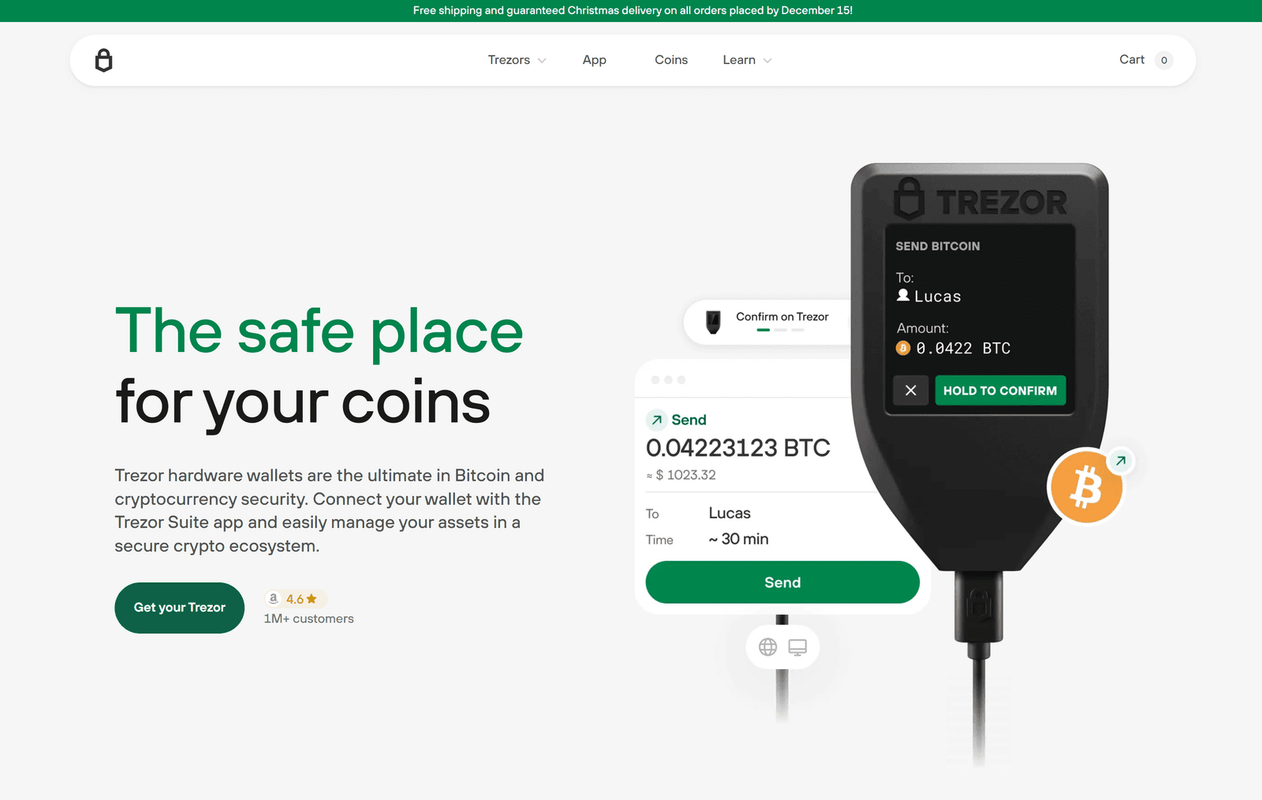Trezor Bridge — What it is and why it matters
A focused, practical guide to installing, using, and securing the desktop connector that lets your Trezor hardware wallet talk to web apps and desktop clients.

Trezor Bridge is the small, specialised software that acts as the communication layer between a Trezor hardware wallet and web-based or desktop cryptocurrency applications. Instead of relying on direct browser-level USB access, Bridge runs locally on your computer and establishes a controlled, authenticated channel to your Trezor device. This separation improves compatibility across browsers and operating systems, reduces fragile browser permission prompts, and gives the wallet manufacturer a way to manage secure device access without exposing raw USB endpoints to arbitrary webpages.
At heart Bridge is intentionally minimal: it does not hold your keys or mnemonic phrases, nor does it perform signing on its own. Its sole role is to pass messages between the Trezor device and client software, letting the hardware itself perform cryptographic operations inside a secure element. That makes Bridge a convenience layer, not a custodial or risk-bearing component — but because it touches the communication path, correct installation and updating matter for overall safety.
Installing Bridge is generally straightforward. Download the official installer from the Trezor website and follow the prompts for your operating system. On Windows, Bridge will install a small service and register a local endpoint; on macOS it typically requests permission to access USB devices; on Linux, you may need to add a udev rule or run a helper script depending on distribution. The official installer guides you through these steps, and once installed, a simple browser-based detection or the Trezor Suite desktop app will confirm successful connection.
Compatibility is one of Bridge’s major benefits. Historically browsers handled WebUSB inconsistently, so Bridge offers a unified way for web apps and desktop software to detect and talk to your Trezor. It supports Chromium-based browsers and Firefox when used with the Trezor Suite or approved web interfaces. If you prefer not to install Bridge, some advanced users rely on native desktop clients that include embedded transport modules, but that can limit cross-platform web interactions like wallet management via browser-based interfaces and online dApps.
Security frequently comes up when discussing any locally installed component. Bridge is designed with minimal privileges and only forwards structured requests destined for the device. Still, follow basic hygiene: download Bridge only from the official Trezor domain, keep your operating system updated, and avoid installing untrusted browser extensions or native applications that claim to integrate with Trezor. Treat Bridge like any other native helper — useful and low risk, but worth protecting.
Updating Bridge is simple but important. New versions often fix compatibility issues with browsers or operating system changes and occasionally patch subtle bugs. When a Bridge update is available, the Trezor website or Suite will prompt you; accept updates from the official source. If your browser or OS blocks an update or reports a signature mismatch, stop and verify you are using the official installer rather than a third‑party mirror.
Troubleshooting common Bridge problems usually follows a short checklist. First, confirm the Trezor device is unlocked and the screen shows an active session. Next, ensure Bridge is running (check your system tray, services list, or use Task Manager/Activity Monitor). If a browser cannot detect the device, try restarting the browser or clearing temporary permissions. On Linux, reloading udev rules or running Bridge as root for a test can reveal permission issues. If all else fails, reinstall Bridge from the official site and reboot.
For users who value air‑gapped or extra-minimal setups, Bridge is optional. Advanced workflows exist where the hardware wallet connects only to an offline machine or where signing requests are prepared elsewhere and imported. These workflows increase operational complexity but reduce the number of components touching the signing process. Bridge, by design, makes day‑to‑day interactions smoother for the majority of users while preserving the Trezor device’s core security properties.
Privacy considerations are modest: Bridge itself does not phone home or collect wallet data, but the applications you use over it might. When interacting with web services or third‑party wallets, be mindful of what metadata they may log — IP addresses, transaction amounts, and interaction timestamps can leak privacy even when private keys never leave the hardware wallet. Use trusted wallets and consider network-level privacy tools when handling large or sensitive transactions.
Alternatives exist, and choosing the right setup depends on your priorities. Trezor Suite (the official desktop app) bundles easy support and often auto-configures Bridge. Browser-only WebUSB flows remove the need for a separate native helper in some environments, but they can be less predictable across systems. Third‑party wallet integrations may offer built-in transport layers that bypass Bridge entirely. Evaluate each option based on ease-of-use, compatibility with your operating system, and the level of direct control you want over the device.
In practical terms: install the official Bridge if you want the smoothest experience with the widest range of web apps and the Trezor Suite. Keep it updated, verify installers, and pair Bridge with strong local security — full‑disk encryption, a secure local user account, and a minimal set of installed helper applications. When used responsibly, Bridge is a low-risk convenience that preserves the strongest property of hardware wallets: private keys that never leave the device.